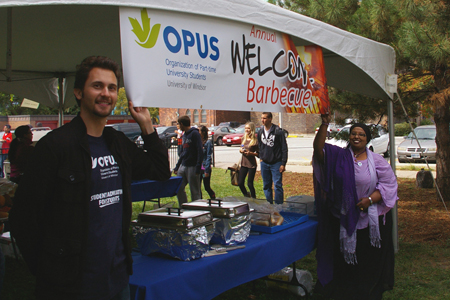If there’s one thing Michael Chen will remember about the summer of 2012, it’s that he never really had a summer.
A recent master’s graduate from the Great Lakes Institute for Environmental Research, he spent three months in the southern hemisphere working with the environmental team at Solid Energy, a coal mining company based in Christchurch, New Zealand.
“It’s been sort of like perpetual autumn for me,” said Chen, who departed during Canada’s spring season, arrived in New Zealand for their fall and winter, and arrived back in Windsor just in time for the fall semester to begin.
Chen is co-supervised by Chris Weisener, an associate professor of biogeochemistry and biological sciences  professor Jan Ciborowski, but he also took part in GLIER’s ERASMUS-CREATE program, which prepares environmental professionals to study sustainable freshwater resources. The training program promotes interdisciplinary collaborations through industry internship placements. In New Zealand, he worked under the direction of Paul Weber, who went to graduate school with Dr. Weisener and still collaborates with him on various research projects.
professor Jan Ciborowski, but he also took part in GLIER’s ERASMUS-CREATE program, which prepares environmental professionals to study sustainable freshwater resources. The training program promotes interdisciplinary collaborations through industry internship placements. In New Zealand, he worked under the direction of Paul Weber, who went to graduate school with Dr. Weisener and still collaborates with him on various research projects.
The point of his trip was to study the effectiveness of using cement kiln dust as a solution to cut down on the acid mine drainage problem from open-pit mining operations. In open pit mining, Chen said exposure of certain rocks, especially metal sulfides, to air and water from rain or run-off, causes acidity, or a drop in pH levels, in the water.
“Looking at it from a reclamation standpoint, aquatic systems with acidity issues don’t make for an ideal situation when it comes to productivity and sustainability,” he said.
Calcium, which is found in limestone and cement kiln dust, is a well-known treatment to deal with acidity problems found in places like mine sites. Cement kiln dust has proven effective, but it also contains thallium, an element which can be harmful to higher trophic levels. Researchers want to know if acid mine drainage could be treated with cement kiln dust without significant quantities of thallium leaching in to the surrounding environment.
“Since we're taking a resource from the area we don't want to leave behind a problem like acid mine drainage,” said Chen, who originally hails from Canada’s capital and earned his undergraduate degree at the University of Ottawa. “We should put the effort toward reclaiming affected areas and restore some productivity so that we're giving future growth a chance.”
Chen was stationed in Christchurch, but also made several four-hour drives to mine sites on the west coast, where he stayed for a week to do field work before returning. In Christchurch, he stayed at a campus residence near the teacher’s college at the University of Canterbury, and while the temperature never dropped much below zero, he said it did snow one day.
“We went outside to play in the snow, and before we knew it, we were joined by another group of Canadians who were staying there too,” he said. “It was a lot of fun.”
Chen said he also had a lot of fun exploring Christchurch. Located on the southernmost of New Zealand’s two islands, it was rocked heavily by an earthquake in February of 2011. He said it was encouraging to see how the city is recovering.
“They’re really trying to turn the city back to what it was, but they’re trying to do a lot of new improvements too,” he said. “I’d really like to go back to see it returned to its new former glory. This will not be my last time there. I definitely want to go back.”
For now, Chen will spend the fall semester wrapping up his reports and helping train the next grad students to work in Weisener’s lab. He said he would like to continue working in the field of environmental science and reclamation, and hasn’t ruled out the possibility of working in the Alberta oil sands, where some of Dr. Ciborowski’s former students are currently employed.






